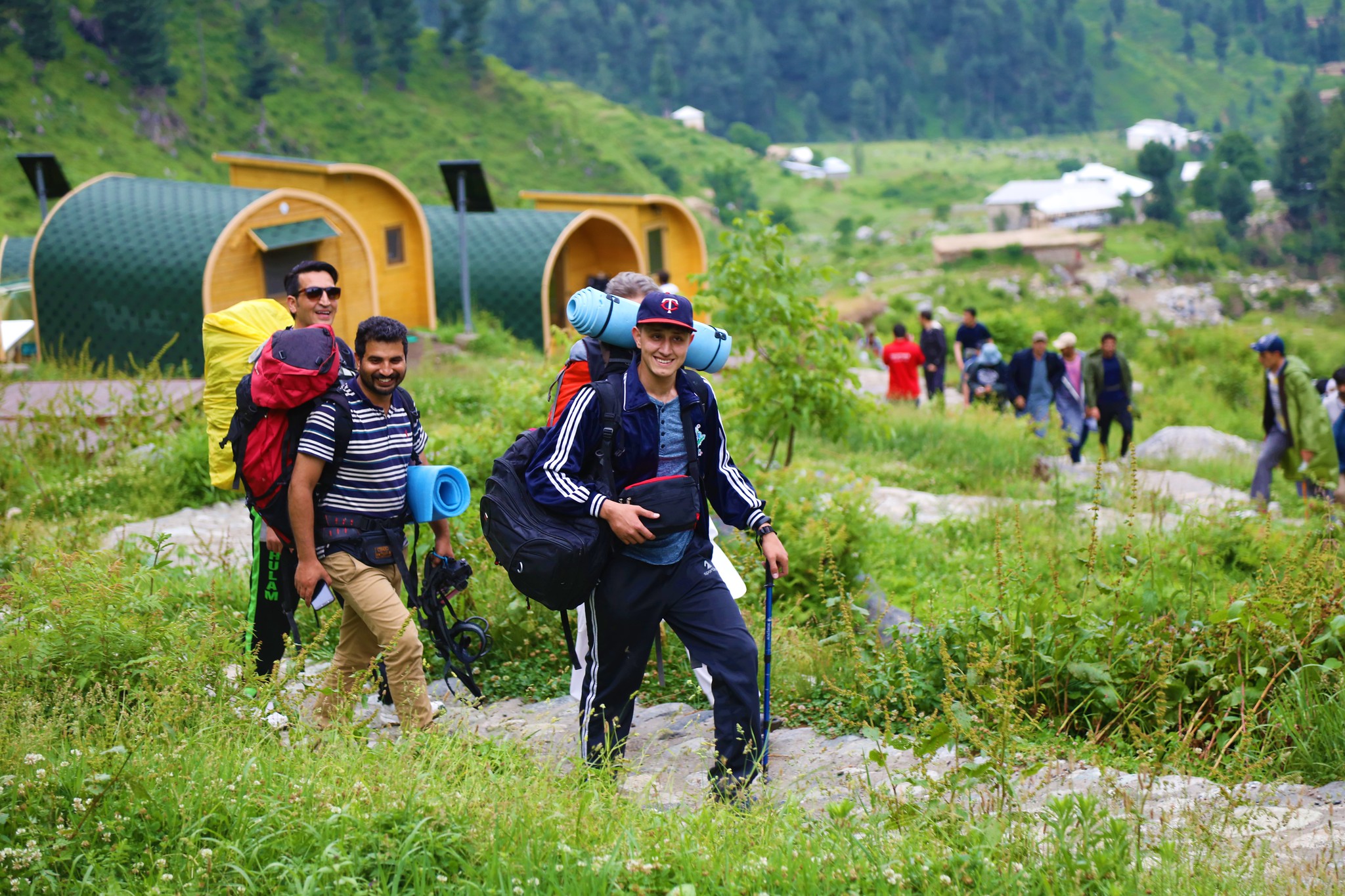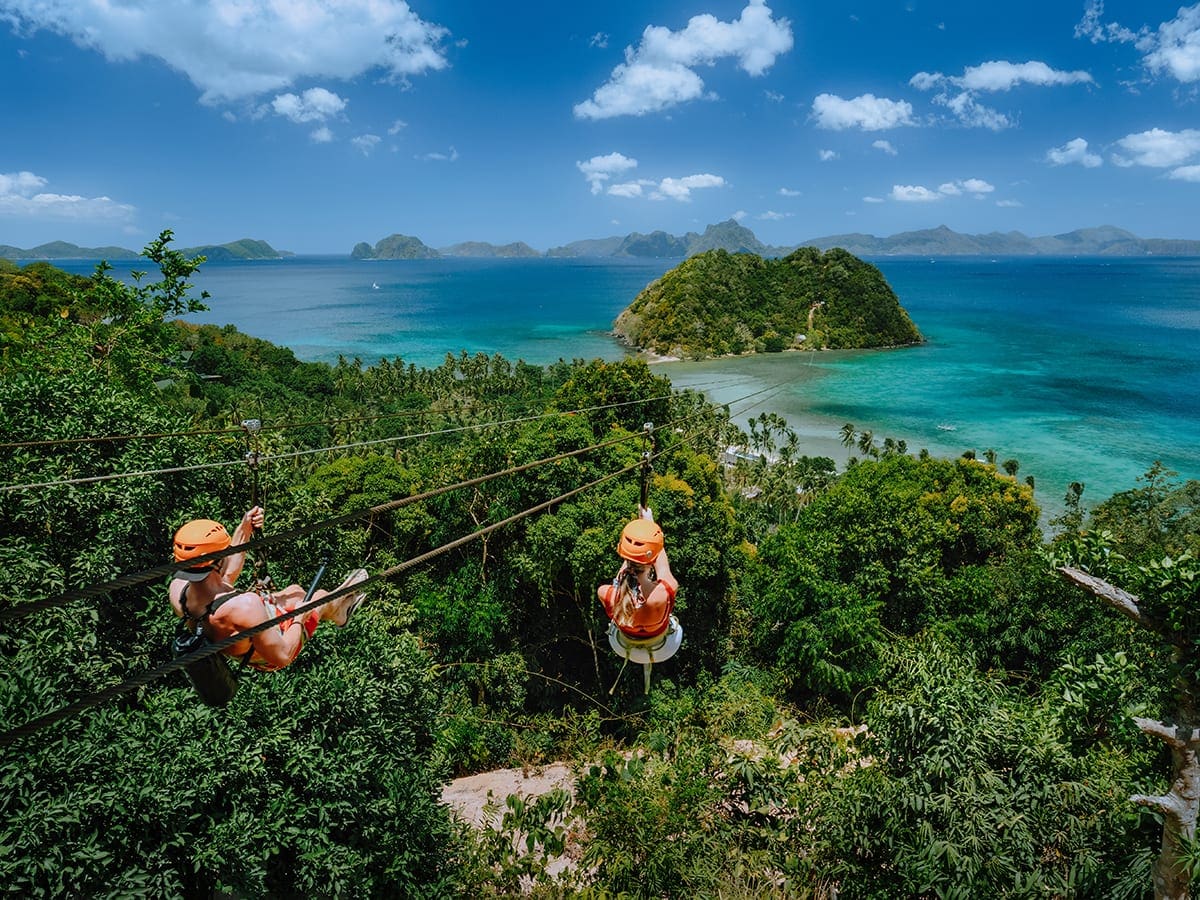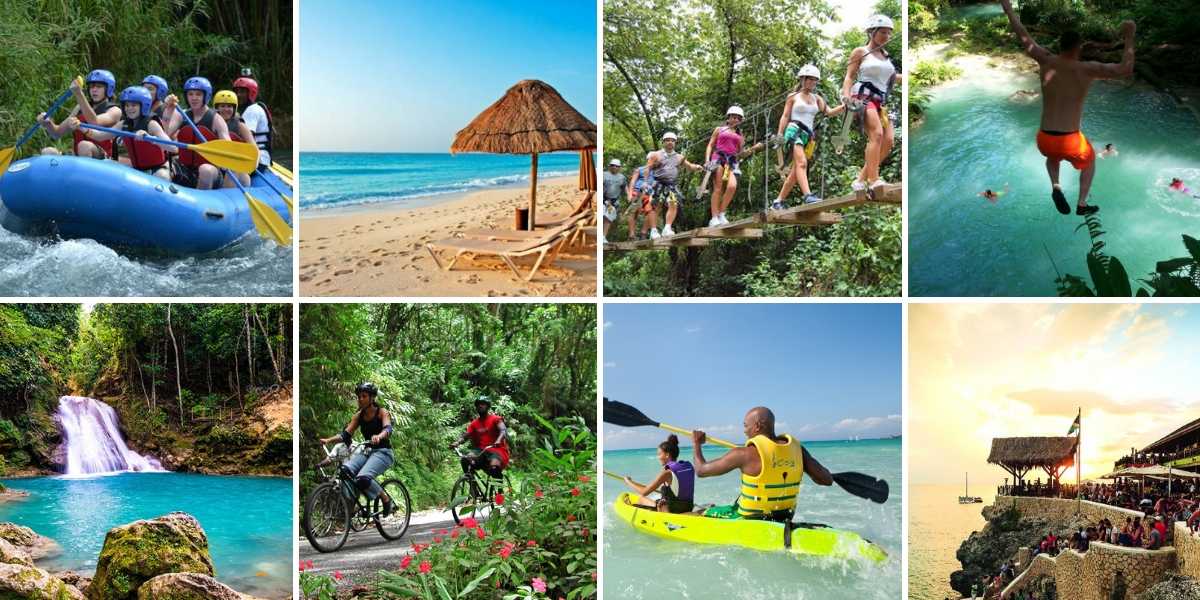Embark on an eco adventure tourism journey where nature takes center stage. This exhilarating form of travel blends adventure with sustainability, promising unforgettable experiences that respect both the environment and local communities.
From trekking through lush rainforests to paddling through crystal-clear waters, eco adventure tourism offers a myriad of activities that connect you with the wonders of the natural world while promoting responsible travel practices.
Eco Adventure Tourism Definition

Eco adventure tourism is a form of responsible tourism that focuses on conserving the environment and promoting sustainable practices while providing unique and adventurous experiences for travelers.
Key characteristics of eco adventure tourism include:
- Emphasis on environmental conservation and protection
- Promotion of sustainable practices and responsible travel
- Focus on unique and adventurous experiences in natural settings
- Support for local communities and economies
- Education and awareness about environmental issues
Sustainability and responsible practices are essential to eco adventure tourism. This includes minimizing environmental impact, supporting local communities, and promoting ethical and respectful behavior.
Types of Eco Adventure Tourism Activities

Eco adventure tourism encompasses a wide range of activities that promote responsible travel while immersing participants in natural and cultural environments. These activities vary in their intensity, duration, and environmental impact.
The following are some of the most popular types of eco adventure tourism activities:
Hiking
Hiking involves walking through natural areas, ranging from gentle trails to challenging mountain ascents. It offers opportunities for wildlife viewing, nature appreciation, and physical exercise. Environmental considerations include staying on designated trails to minimize impact on vegetation and wildlife, and packing out all waste.
Kayaking
Kayaking is a water-based activity that allows participants to explore waterways such as rivers, lakes, and coastal areas. It provides a unique perspective on wildlife, ecosystems, and landscapes. Environmental considerations include using non-polluting kayaks, respecting wildlife, and avoiding sensitive areas during breeding or nesting seasons.
Wildlife Viewing
Wildlife viewing involves observing animals in their natural habitats, typically through guided tours or safaris. It offers opportunities to learn about animal behavior, ecology, and conservation efforts. Environmental considerations include maintaining a respectful distance from wildlife, avoiding disturbing their behavior, and following regulations to protect endangered species.
Cultural Immersion
Cultural immersion involves engaging with local communities to learn about their traditions, customs, and lifestyles. It can include activities such as visiting villages, attending cultural events, and participating in traditional crafts or ceremonies. Cultural considerations include respecting local customs and traditions, asking permission before taking photographs, and contributing to the local economy through purchases or donations.
Benefits of Eco Adventure Tourism
Eco adventure tourism offers a myriad of benefits for individuals, communities, and the environment. It promotes physical and mental well-being, fosters cultural understanding, and supports local economies while preserving natural habitats.
Benefits for Individuals
- Enhanced physical health:Outdoor activities, such as hiking, kayaking, and rock climbing, improve cardiovascular health, strength, and endurance.
- Improved mental well-being:Spending time in nature reduces stress, anxiety, and depression, while boosting mood and creativity.
- Personal growth and development:Adventure challenges push individuals out of their comfort zones, fostering self-confidence, resilience, and problem-solving skills.
Benefits for Communities
- Economic development:Eco adventure tourism creates jobs, supports local businesses, and generates revenue for infrastructure and community projects.
- Cultural preservation:Tourism activities can showcase traditional customs, crafts, and cuisine, promoting cultural exchange and understanding.
- Conservation awareness:Eco adventure tours often educate participants about environmental issues, fostering a sense of stewardship and appreciation for natural resources.
Benefits for the Environment, Eco adventure tourism
- Protected habitats:Eco adventure tourism promotes the conservation of natural areas by generating revenue for protected areas and supporting sustainable land management practices.
- Reduced environmental impact:Eco adventure operators prioritize responsible practices, minimizing waste, pollution, and disturbance to wildlife.
- Education and outreach:Eco adventure activities can raise awareness about environmental issues and inspire visitors to adopt sustainable behaviors.
Examples of Successful Eco Adventure Tourism Initiatives
- Costa Rica:Renowned for its sustainable tourism practices, Costa Rica offers a wide range of eco adventure activities, such as zip-lining through rainforests and white-water rafting.
- Galapagos Islands:The Galapagos National Park is a UNESCO World Heritage Site and a popular destination for wildlife-based eco adventure tours.
- Bhutan:Bhutan’s Gross National Happiness Index includes environmental sustainability as a key indicator, and the country promotes responsible tourism that protects its pristine natural landscapes.
Challenges of Eco Adventure Tourism
While eco adventure tourism offers a multitude of benefits, it also poses certain challenges and risks that need to be addressed.
Environmental Degradation
Eco adventure tourism activities can potentially lead to environmental degradation if not managed responsibly. For instance, off-road driving, trekking, and camping can damage fragile ecosystems, disturb wildlife, and pollute natural areas.
Overcrowding
As eco adventure tourism becomes increasingly popular, certain destinations may experience overcrowding. This can lead to environmental damage, strain on local resources, and diminish the quality of the experience for visitors.
Cultural Insensitivity
Eco adventure tourism can also pose challenges related to cultural insensitivity. Tourists may not be aware of or respect local customs and traditions, which can lead to misunderstandings and conflicts with local communities.
Responsible Tourism Practices
Mitigating the challenges of eco adventure tourism requires the adoption of responsible tourism practices. These include:
- Minimizing environmental impact by using eco-friendly transportation, accommodation, and equipment.
- Respecting local cultures and traditions by learning about them and behaving appropriately.
- Supporting local businesses and communities to ensure that the benefits of tourism are shared equitably.
- Educating tourists about the importance of responsible behavior and the potential consequences of irresponsible actions.
Best Practices for Eco Adventure Tourism

Eco adventure tourism is a responsible form of tourism that minimizes environmental impact, respects local cultures, and ensures the safety of participants. To ensure the sustainability and integrity of eco adventure tourism, it’s essential to adhere to best practices for both operators and travelers.
These guidelines provide a framework for responsible tourism, ensuring that eco adventure activities are conducted in a way that preserves the environment, supports local communities, and enhances the overall experience for participants.
When you’re looking for an eco adventure tourism experience, it’s important to do your research and find a company that is committed to sustainability. There are many great resources available online that can help you find eco-friendly tour operators. For more eco tourism information , check out our website.
We have a wealth of information on eco adventure tourism, including tips on how to choose a responsible tour operator and how to minimize your environmental impact while traveling.
For Operators
Eco adventure tourism operators play a crucial role in promoting responsible practices. By implementing these guidelines, they can demonstrate their commitment to sustainability and provide a positive experience for travelers.
- Minimize environmental impact:Use sustainable practices, such as using biodegradable materials, reducing waste, and conserving water and energy.
- Respect local cultures:Engage with local communities, respect their traditions and customs, and support local businesses.
- Ensure safety:Provide adequate training and equipment, maintain high safety standards, and have emergency protocols in place.
- Obtain certification:Seek certification from reputable organizations to demonstrate adherence to responsible tourism principles.
For Travelers
Travelers also have a responsibility to practice eco-friendly behaviors and support sustainable tourism initiatives. By following these guidelines, they can contribute to the preservation of natural and cultural heritage while enhancing their travel experience.
Eco adventure tourism is a booming industry that allows travelers to experience the natural world while also getting some exercise. From hiking and biking to kayaking and rafting, there are endless ways to enjoy the great outdoors. The eco tourism industry is growing rapidly as more and more people seek out ways to travel that are both sustainable and adventurous.
Eco adventure tourism is a great way to learn about the environment and different cultures while also having a lot of fun.
- Choose responsible operators:Look for operators that are certified or have a proven track record of sustainable practices.
- Minimize waste:Bring reusable items, avoid single-use plastics, and dispose of waste properly.
- Respect the environment:Stay on designated trails, avoid disturbing wildlife, and protect natural resources.
- Support local communities:Engage with local businesses, learn about the culture, and contribute to the local economy.
Future Trends in Eco Adventure Tourism
Eco adventure tourism is constantly evolving, with new trends and innovations emerging all the time. These trends are being driven by a number of factors, including the increasing popularity of sustainable travel, the growing awareness of the importance of protecting the environment, and the development of new technologies.
One of the most important trends in eco adventure tourism is the use of technology to enhance the experience for travelers. This can include using GPS devices to track hikes, drones to capture aerial footage, and virtual reality to create immersive experiences.
Technology can also be used to minimize the impact of tourism on the environment, such as by using solar-powered devices and recycling materials.
Sustainable Practices
Another important trend in eco adventure tourism is the adoption of sustainable practices. This can include using renewable energy sources, reducing waste, and protecting wildlife. Sustainable practices can help to minimize the impact of tourism on the environment and ensure that future generations can enjoy these experiences.
Community Involvement
Community involvement is also becoming increasingly important in eco adventure tourism. This can include working with local communities to develop and manage tourism projects, and sharing the benefits of tourism with local people. Community involvement can help to ensure that tourism benefits the local community and that it is sustainable in the long term.
Examples of Innovative Eco Adventure Tourism Experiences
There are many innovative eco adventure tourism experiences being developed around the world. Here are a few examples:
- Solar-powered hiking trails:These trails use solar-powered lighting to illuminate the trail at night, making it possible to hike in the dark without using flashlights.
- Virtual reality wildlife safaris:These safaris use virtual reality technology to create immersive experiences that allow travelers to see wildlife up close without disturbing the animals.
- Community-based tourism projects:These projects work with local communities to develop and manage tourism projects that benefit the community and protect the environment.
These are just a few examples of the many innovative eco adventure tourism experiences being developed around the world. As the industry continues to grow, we can expect to see even more innovative and sustainable experiences emerge.
Final Conclusion
Eco adventure tourism empowers individuals to explore the world while fostering a deep appreciation for its fragility. By embracing sustainability, cultural sensitivity, and responsible practices, we can create a future where adventure and conservation go hand in hand, ensuring that future generations can enjoy the same awe-inspiring experiences.
Essential FAQs
What are the key principles of eco adventure tourism?
Minimizing environmental impact, respecting local cultures, and ensuring the safety of participants.
How does eco adventure tourism benefit local communities?
By providing economic opportunities, promoting cultural exchange, and supporting conservation efforts.
What are some examples of eco adventure tourism activities?
Hiking, kayaking, wildlife viewing, and cultural immersion.
What are the challenges faced by eco adventure tourism?
Environmental degradation, overcrowding, and cultural insensitivity.
